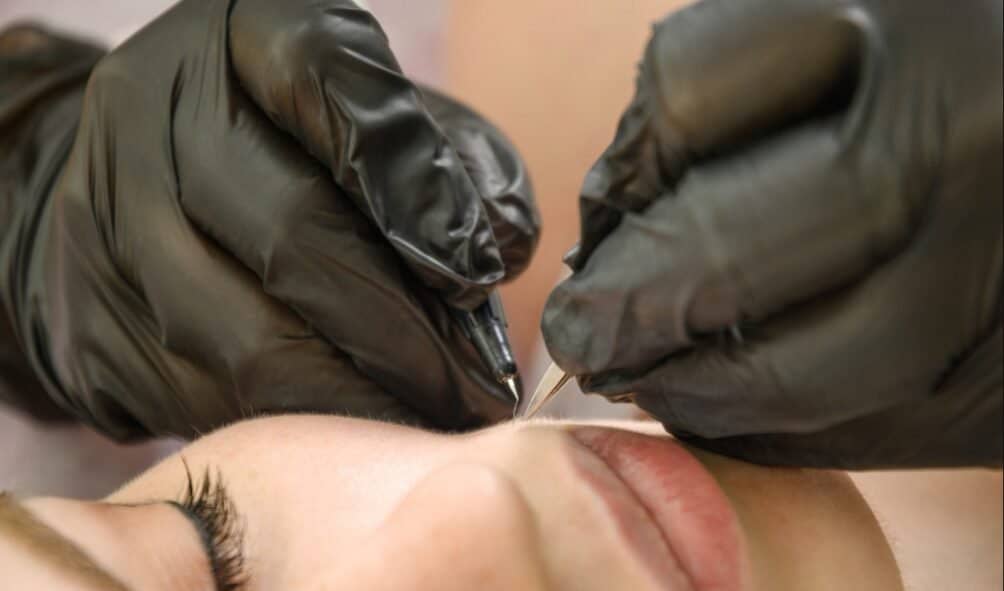Electrolysis at Drip in Luxe Medspa (Durham Region)
Electrolysis is the only fda-recognized permanent hair removal
If you’re done with the cycle of shaving, waxing, or laser “touch-ups,” electrolysis is your finish line. At Drip in Luxe Medspa (Durham Region, GTA), our medical-grade electrolysis permanently destroys hair growth cells—on any skin tone and any hair color—so the hair does not grow back.
Why Electrolysis?
Permanent: Electrolysis is the only method the FDA recognizes for permanent hair removal. Laser devices are cleared for permanent hair reduction (a long-term decrease in hair counts), not removal. Cleveland Clinic
For all hair & skin types: Works on blond, red, gray, white, vellus, and coarse hairs—on every Fitzpatrick skin type.
Precision: Treats each follicle individually, ideal for face (chin, upper lip, brows), bikini, underarms, chest, abdomen, back, fingers/toes, and more.
Great for “laser-resistant” hair: Perfect when laser can’t “see” lighter hairs or when laser results plateau. Authoritative FDA device clearances explicitly define laser outcomes as reduction, measured at 6–12 months after treatment courses. FDA Access Data
How Electrolysis Works (Galvanic, Thermolysis & Blend)
An ultra-fine sterile probe slides into the natural follicle opening; a controlled current targets the hair’s growth cells. Three clinically established modalities are used:
Galvanic (DC): Produces a chemical reaction that destroys growth tissues.
Thermolysis (RF/short-wave): Produces heat to denature growth cells.
Blend: Combines both for efficiency on deep or distorted follicles. Electrology
At Drip in Luxe, your electrologist selects (and often combines) modalities based on area, hair size, depth, and your comfort.
Electrolysis vs. Laser Hair Removal: What’s the Difference?
Regulatory language matters
Electrolysis: Permanent removal.
Laser/IPL: Permanent reduction—defined across FDA 510(k) clearances as a long-term, stable reduction in hair counts at 6, 9, and 12 months after completing treatment.
Candidacy
Electrolysis works on all hair colors and skin tones. Laser is most effective on darker hair; major clinics note limitations and potential rare side effects like burns, pigment change, or paradoxical growth.
Safety & oversight
Health Canada provides laser safety guidance for facilities; Ontario public health units publish infection-prevention standards for electrolysis equipment and sharps. Drip in Luxe follows these to the letter. Government of Canada+2York Region
What to Expect at Drip in Luxe
Consultation & Test Hairs
We map growth patterns, assess any hormonal or medication considerations, and treat a few “test hairs” to tailor settings and estimate timing.
Session Timing & Series
Electrolysis treats individual follicles. Session lengths vary (from 15 to 60+ minutes), and total plan length depends on area size, hair density, and growth cycles. Because follicles cycle (anagen/catagen/telogen), a series across several months yields a full clearance. (Major medical centers describe electrolysis as permanent, with multiple sessions expected.)
Comfort & Aftercare
Most clients describe a quick warmth or pinch. Expect transient redness or perifollicular edema that resolves quickly; long-lasting effects are uncommon when performed by trained practitioners. We provide soothing post-care (cooling, avoid heat/exertion 24–48h, gentle cleansing).
Is Electrolysis Safe?
Yes, when performed with proper technique and sterile, single-use probes (needles), with sharps disposal and instrument tracking. Ontario public health guidance requires sterile needles, documented lot/expiry, and strict hand hygiene/glove use—standards we adhere to in every appointment. York Region+1
Ready for Smooth, Hair-Free Skin—For Good?
Book your Electrolysis Consultation at Drip in Luxe Medspa (Durham Region, GTA). We’ll create a precise, permanent plan for the areas that matter most to you, safely, hygienically, and with medical oversight.
FAQ
Will the hair ever return?
Once a follicle’s growth cells are fully destroyed, that hair will not regrow. New hairs can appear due to hormones, genetics, or dormant follicles entering growth, those can be treated as they emerge.
How is this different from “laser permanent removal”?
Read the fine print: FDA clearances for laser/IPL define outcomes as permanent hair reduction, measured by hair counts months after treatment, not guaranteed removal of every follicle. That’s why stubborn/light hairs often remain after laser and are finished off with electrolysis.
Is it safe for facial hair on darker skin?
Yes. Electrolysis bypasses melanin targeting, making it color-independent and suitable for all skin tones. (In contrast, reputable clinics and medical sites caution that laser can rarely cause pigment changes or burns, especially on darker skin.)
